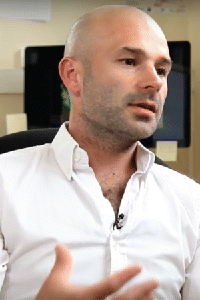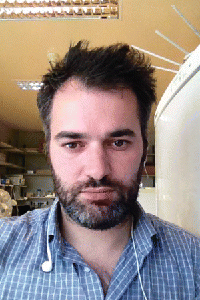Small, freely circulating extracellular vesicles (EVs) can be found everywhere in our environment, from internal body fluids to the vast oceans. Since the initial discovery of their functional involvement in cell-cell communication in the mid-nineties, research on extracellular vesicles exploded (in 2006, 285 articles use the word exosomes or extracellular vesicles versus 2052 articles in 2016). It is now clear that EVs can be secreted by unicellular pro- or eukaryotes as well as by most, if not all, cell types of multicellular organisms. Over time, EVs lost their “Cell waste” identity to become one of the most-studied extracellular component. EVs are heterogenous in origin, as they can emerge from the plasma membrane (microvesicles) or from endosomal compartments (exosomes), but also in content (lipids, proteins, RNAs) and presumably in function. They are involved in a large variety of contexts, which can be physiologic (e.g. embryonic development, sexual behavior) or pathological (e.g., parasitic diseases, neuropathy, immune response, cancer). However, many open questions remain to be addressed, notably regarding EVs in their natural environment, which is still challenging to study due to their small sizes.
In this special issue on Extracellular Vesicles, we have gathered 8 reports reflecting the growing interest and the diversity of the research on small EVs. It is obvious that this field is evolving exponentially and that there is already a wide plethora of review articles that can be found in the literature. Thus, our intention in this Special Focus was to compile snapshots of the diversity of studies currently undertaken, and to identify the next steps that need to be engaged for further understanding how EVs are produced, secreted, shuttled and, most importantly, how they can deliver a message at distance from their mother cell, which made them so popular.
Although the intracellular mechanisms leading to production and secretion of EVs have been widely studied, there are still some remaining gaps. Exosomes are secreted in the extracellular space by the fusion between an endosomal compartment containing small intraluminal vesicles (ILVs), the Multi-Vesicular Body (MVB) and the plasma membrane. Several molecular mechanims have been shown to affect exosome secretion by controlling ILV formation or MVB targeting or fusion with the plasma membrane. Zimmermann and co-authors comment on their recent studies of the role of syndecan-syntenin pathway in the biogenesis of exosomes and the sorting of cargoes into exosomes. The PDZ protein syntenin interacts with both the type I transmembrane protein syndecan and the ESCRT associated protein Alix to promote ILV budding and cargo sorting.
Alternatively to plasma membrane fusion, MVBs can fuse with lysosomes, leading to the degradation of their content. Therefore, MVBs are at the crossroad between degradation and secretion. Desdín-Micó and Mittelbrunn's review revisits the old notion that EVs secretion allows the selective release of harmful components (damaged or toxic material). They highlight the link between exosome secretion and cellular degradation and how coupling these mechanisms allows secreting cells to maintain their homeostasis in physiologic and pathological contexts.
A fine understanding of EVs requires to study them in their natural environment. Along this line, dissection of the mechanisms of exosome secretion and functions in vivo using model organisms complemented and widened the work done in cultured cells in vitro. Here, Beer and Wehman describe how 2 small model organisms, the fruit fly drosophila melanogaster and the nematode Caenorhabditis elegans participated to the better understanding of the function of EVs in vivo, in multicellular organisms. These small organisms present the advantages to allow fine genetic and imaging approaches, which is of utmost importance for dissecting the mechanisms of EV secretion and address their function in physiologic or developmental contexts.
While EVs play essential roles in normal physiology and during development, it appears that they play a key role in many pathological situations. Over the past years, the content and the function of EVs has been mostly studied in the context of cancer, as tumor cells (but also tumor-associated components such as fibroblasts or immune cells) secrete large amounts of EVs. Amounts and contents of these tumor EVs have been shown to mostly foster tumor progression. In their review, Gobbo and colleagues describe the main cargos, in particular heat shock proteins, and functions of cancer exosomes. They discuss their relevance as biomarkers for non-invasive, early diagnosis of cancer using patients biofluids. They further elaborate on their potential therapeutic use in immunotherapy or drug delivery approaches.
EVs are secreted by most tumors, in significant amounts. In another review article, André-Grégoire and Gavard concentrate on one particular type of tumors, the glioblastoma, which represents the most malignant and deadly brain tumor in adults, with a poor prognosis due, partly, to its difficulty to be detected early. Importantly, EVs from glioblastoma can be found in blood stream or urine of patients, and thus make them suitable candidates for improving diagnosis and therapeutic strategies for glioblastoma.
One of the most recent and exciting features of tumor EVs is their capacity to prime niches, prone to metastasis, at distance. However, although this field has lead to unexpected discoveries, the exact mechanisms leading to exosome seeding and priming, at distance, remain to be solved. Hyenne, Lefebvre and Goetz discuss the recent publications assessing the capacity of tumor EVs to modify their microenvironment in vivo, either locally around the primary tumor or at distance in the pre-metastatic niche. They elaborate on EV labeling and imaging approaches, as well as on the current limitations and remaining challenges that will need to be overcome to be, in the near future, capable of tracking individual EVs in living organisms.
Finally, our Special Focus proposes 2 short research articles that extend our understanding of the biology of EVs. In their short communication, Sung and Weaver evaluate the contribution of EVs in chemotaxis of cancer cells. They show that exosome secretion is required for the migration of tumor cells and study the involvement of different EV cargoes on the speed or directionality of cancer cells.
Hendrix and co-authors describe a new protocol, based on differential ultracentrifugation and density gradients, to isolate EVs that are present in the conditioned medium of cancer-associated adipose tissue from breast cancer patients. They combined immuno-electron microscopy, nanoparticle tracking analysis and western blot to characterize the purified EVs and demonstrate that these purified EVs can have a functional impact on tumor cells in vitro. This new method opens new doors in studying the contribution of tumor-associated adipocytes in breast cancer progression.
Overall, this Special Focus further demonstrates the diversity of the research that is currently being performed on Extracellular Vesicles. There is no doubt that there is much more to learn from these tiny objects and that combination of new imaging technologies, fast-evolving omics-approaches, improved purification protocols and new animal models will contribute significantly to the complete understanding of their relevance in normal and pathophysiological situations.
Additional information
Notes on contributors

Vincent Hyenne
Vincent Hyenne graduated in Genetics and Cell Biology from University Paris VI Jussieu (France). He obtained his Ph.D. in 2005 in the laboratory of Bernard Maro (UMR7622, University Paris VI Jussieu, Paris, France), where he first studied the function of an adherens junctions protein, called Vezatin, in mouse embryonic development and spermatogenesis. He performed a first post-doctoral stay in the laboratory of Jean-Claude Labbé (IRIC, Montréal, Canada) where he led a study on the molecular mechanisms, in particular vesicular trafficking, controling polarity and asymmetric division in C. elegans embryo. He then joined the team of Michel Labouesse (IGBMC, Strasbourg, France) for a second post-doctoral stay where he identified new genes involved in exosome secretion, including the GTPase ral-1. In 2014, he joined the team lead by Jacky Goetz to study the function of exosomes and microvesicles in tumor progression and metastasis. He was recruited as a researcher in CNRS in 2016.

Jacky G. Goetz
Jacky G. Goetz graduated in Pharmacology and Cell Biology from University of Strasbourg (France). He obtained his Ph.D. in 2007 in the laboratory of Ivan Robert NABI (University of British Columbia, Vancouver, Canada), where he first studied the interaction between the endoplasmic reticulum and mitochondria. He later described the role of glycosylation of membrane proteins, in particular integrins, and described its importance, in concert with Caveolin-1 (Cav1), in fibronectin fibrillogenesis, focal adhesion dynamics and tumor cell migration. He performed a first post-doctoral stay in the laboratory of Miguel Angel DL POZO (CNIC, Madrid, Spain) where he led a study on the implication of Cav1 in biomechanical remodeling of the microenvironment and showed its importance in normal tissue architecture but especially during tumor progression. He then joined the team of Julien VERMOT (IGBMC, Strasbourg, France) for a second post-doctoral stay to pursue his interests in mechanotransduction using zebrafish as a model, and identified endothelial cilia as flow sensors during developmental angiogenesis. In 2012, he won the « SBCF young scientist » prize for his contribution to Cell Biology and launched his team « Tumor Biomechanics » in 2013 where he develops his interest in the role played by biomechanical forces during tumor progression. Since then, he developed a pioneer intravital correlative imaging approach to track cellular behavior at multiple scales. In 2016, he was nominated to section 22 « Cell Biology » of the CNRS national committee (equivalent to NIH study sections).
